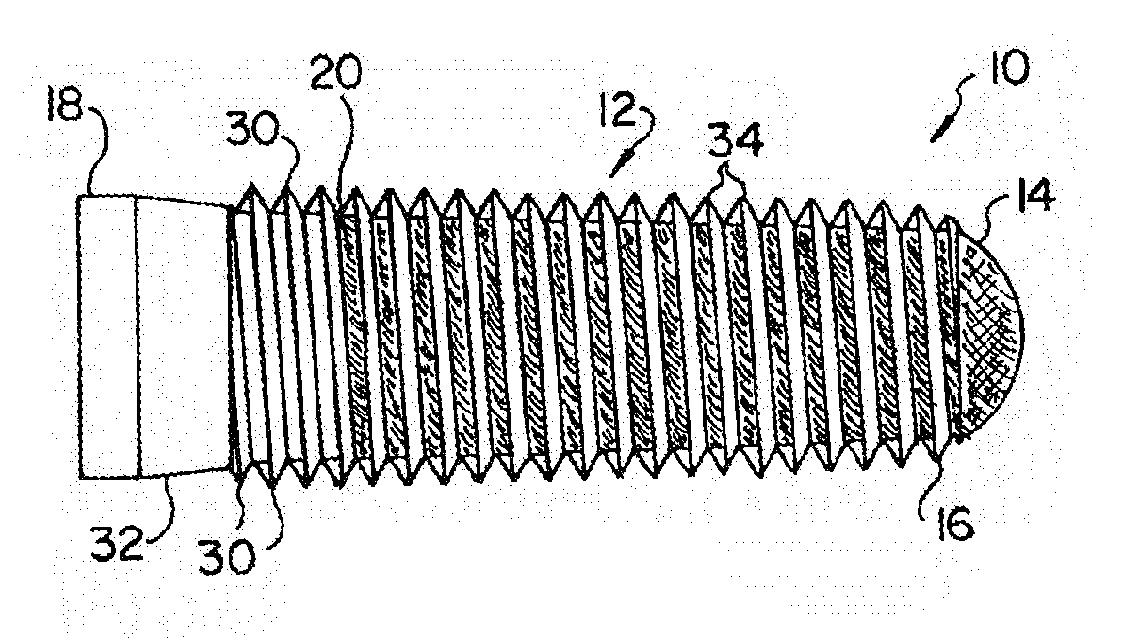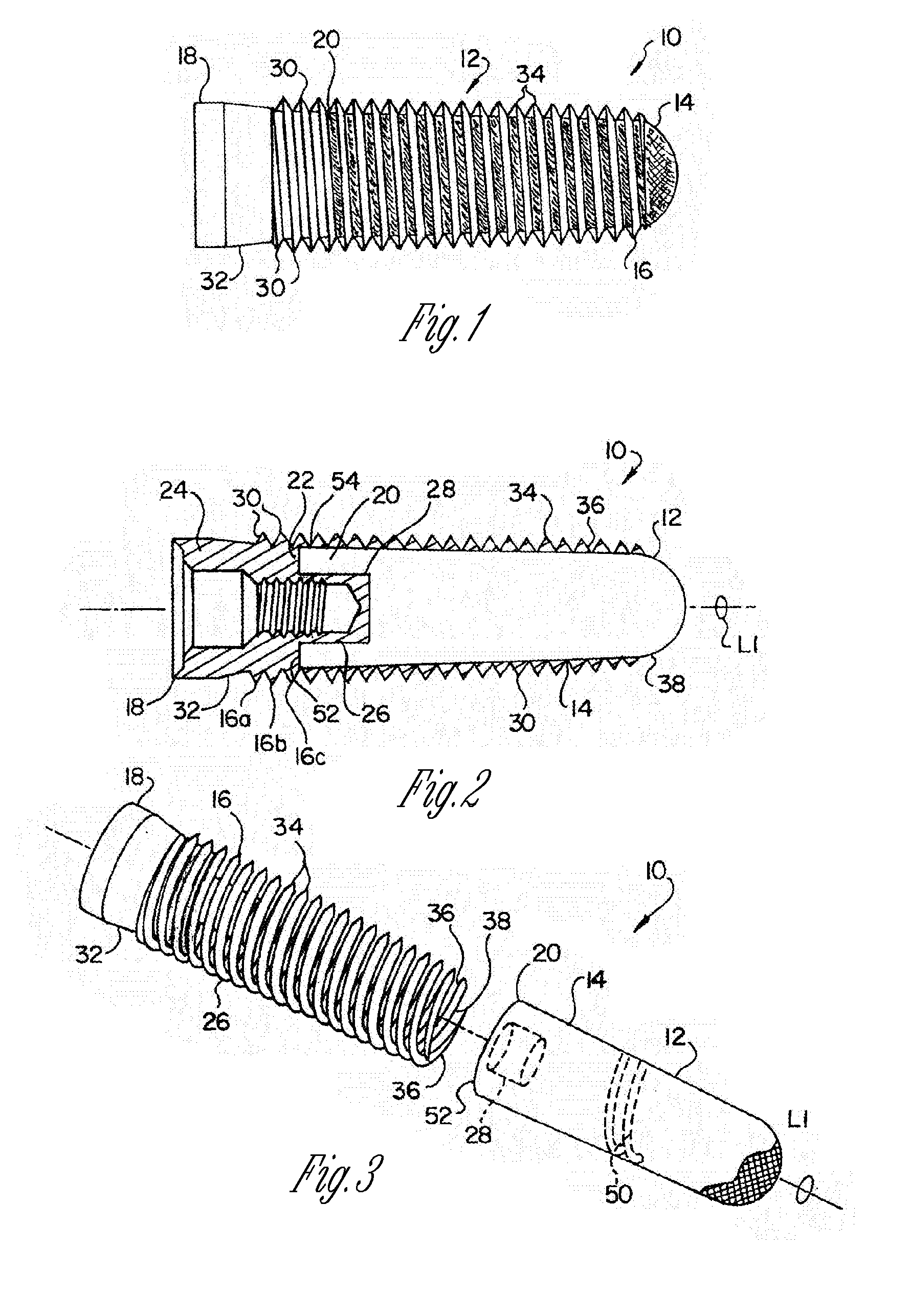Porous implant with non-porous threads
a technology of threads and implants, applied in dental implants, dental surgery, medical science, etc., can solve the problems of not providing sufficient strength to use as threads on screw-types, the implant can become displaced, and the bone growth only near the implant surface, so as to improve the long-term stability of the implant, improve the osseointegration of the implant, and increase the short-term stability
- Summary
- Abstract
- Description
- Claims
- Application Information
AI Technical Summary
Benefits of technology
Problems solved by technology
Method used
Image
Examples
Embodiment Construction
[0043]Referring to FIGS. 1-3, an implant 10 can be used to anchor prosthetic devices to bone. In one form, the implant 10 can be a dental implant for anchoring an abutment or other dental prosthesis to a jaw bone. The implant 10 generally defines a longitudinal axis L1 (shown in FIG. 2) and includes a shaft 12 made of a porous material for improving osseointegration onto the implant 10 as explained in greater detail below. The shaft 12 can include an exterior surface 14 and at least one non-porous thread 16 winding around, and engaging, the exterior surface 14, and extending outwardly from the exterior surface 14 for engaging bone. While the illustrated shaft 12 is substantially porous, shaft 12 can have a non-porous, axially extending core. Such a core could be made of titanium, ceramic or other non-porous material.
[0044]The implant 10 can include a non-porous head portion 18 located at a coronal end portion 20 of the shaft 12. The non-porous head portion 18 can be made of a suitab...
PUM
 Login to View More
Login to View More Abstract
Description
Claims
Application Information
 Login to View More
Login to View More - R&D
- Intellectual Property
- Life Sciences
- Materials
- Tech Scout
- Unparalleled Data Quality
- Higher Quality Content
- 60% Fewer Hallucinations
Browse by: Latest US Patents, China's latest patents, Technical Efficacy Thesaurus, Application Domain, Technology Topic, Popular Technical Reports.
© 2025 PatSnap. All rights reserved.Legal|Privacy policy|Modern Slavery Act Transparency Statement|Sitemap|About US| Contact US: help@patsnap.com



